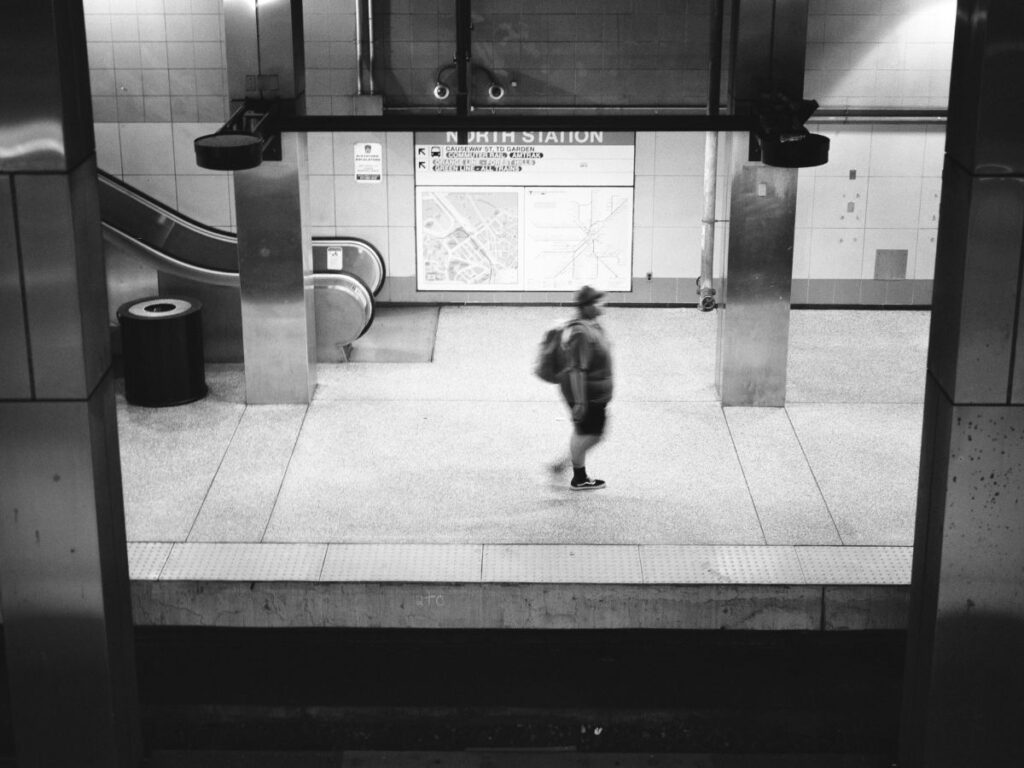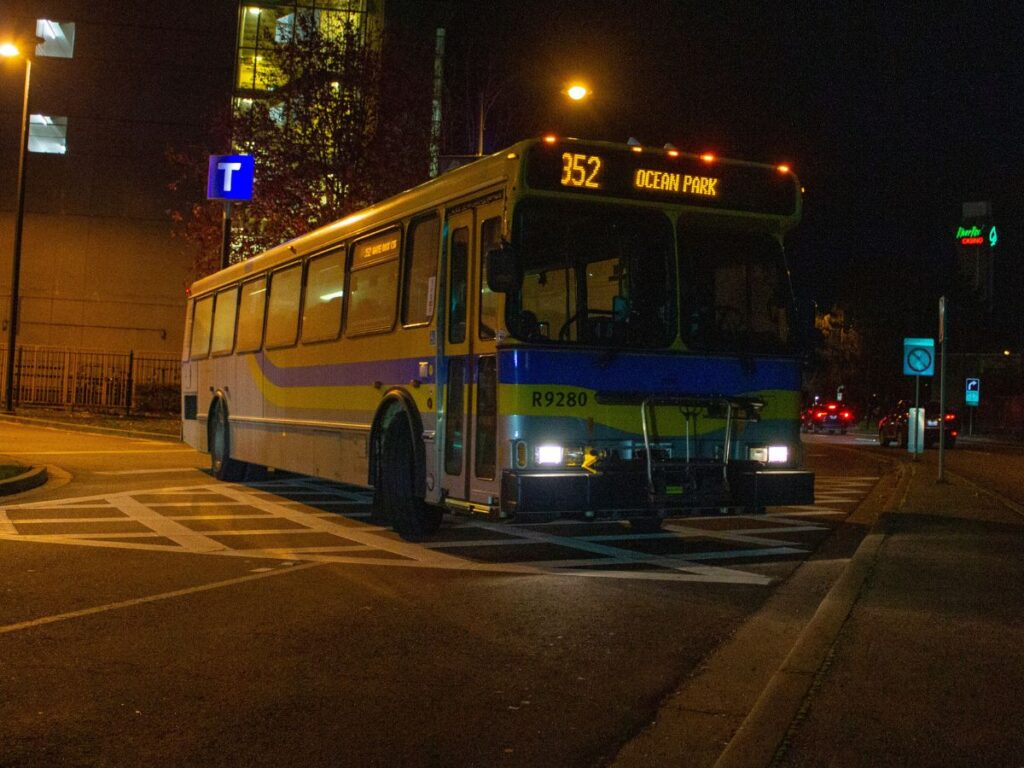Nestled in the heart of The Annex, St. George Station stands as a cornerstone of Toronto’s public transit system. Connecting two major subway lines—Line 1 Yonge-University and Line 2 Bloor-Danforth—this bustling hub is not only one of the busiest in the city but also a gateway to some of Toronto’s most iconic destinations. Renowned as one of the best subway stations in The Annex, St. George Station seamlessly blends modern amenities, like Wi-Fi and accessibility features, with historical charm. Whether you’re commuting to work, exploring cultural landmarks like the Royal Ontario Museum, or heading to the University of Toronto, this station offers unparalleled convenience. Dive into this guide to discover why St. George Station in The Annex is more than just a stop—it’s a vital connection in Toronto’s vibrant transit network and a testament to the city’s evolving urban landscape.
Overview of St. George Station
St. George Station, located at the intersection of Bloor Street West and St. George Street, is one of Toronto’s most vital public transit stations. Positioned in the heart of The Annex, this station connects two major subway lines: Line 1 Yonge-University and Line 2 Bloor-Danforth.
As one of the best subway stations in The Annex, St. George Station accommodates approximately 209,994 daily riders, ranking as the second-busiest station in Toronto after Bloor-Yonge. This dual-line connectivity provides seamless transit options across the city, making it a preferred choice for commuters.
The station is equipped with modern amenities to enhance passenger convenience. Riders can access Wi-Fi and cellular services throughout the station, as well as bike-friendly facilities like lock-up areas and repair stands. These features position St. George Station as a standout among public transit stations in The Annex and across Toronto.

History of St. George Station
St. George Station, a prominent transit hub in The Annex, first opened its doors to the public in 1963 with the launch of Line 1 Yonge-University. Just three years later, in 1966, Line 2 Bloor-Danforth began operating, transforming the station into a critical interchange point within Toronto’s subway network.
A key feature in the station’s early history was the Bedford Loop, a streetcar turning loop located near the Bedford Road entrance. Operational from 1954 until 1966, it provided seamless connections between streetcars and the subway before being phased out with the expansion of the Bloor-Danforth line.
St. George Station became one of Toronto’s public transit stations in The Annex to prioritize accessibility in 1999, introducing elevators and other features for mobility-impaired riders. In 2019, a pilot project introduced platform door markers to improve passenger flow, showcasing the station’s commitment to enhancing the commuter experience. These milestones highlight why St. George Station remains one of the best subway stations in The Annex today.
Features and Facilities of St. George Station
St. George Station, located in The Annex, offers a range of facilities that enhance convenience for commuters and solidify its place among the best subway stations in The Annex.
Entrances
Bedford Road Entrance: Fully accessible and staffed during all operational hours, located on the west side of Bedford Road, just north of Bloor Street West.
St. George Street Entrance: Unstaffed and automatic, situated on the east side of St. George Street, north of Bloor Street West, offering quick access for commuters.
Ontario Institute for Studies in Education (OISE) Entrance: Limited access during weekdays, located on the north side of Bloor Street West, inside the OISE building. This entrance is closed on evenings and weekends.
Accessibility
St. George Station is designed to cater to all riders, including those with mobility challenges. The station features elevators and escalators connecting its multiple levels, ensuring seamless access to Line 1 and Line 2 platforms. Designated waiting areas are also available to provide comfort and safety for passengers requiring priority boarding.
Parking and Cycling
While there is no on-site parking at St. George Station, the station supports cyclists with dedicated bike lock-up facilities and a repair station, making it one of the most commuter-friendly public transit stations in The Annex.
These features reflect the station’s commitment to providing a modern, accessible, and bike-friendly transit experience, distinguishing it as one of Toronto’s standout public transit stations.

Infrastructure and Layout of St. George Station
St. George Station, located in The Annex, is a multi-level transit hub designed to facilitate efficient commuter movement and provide seamless connectivity between two major subway lines. Here’s an overview of the station’s four levels and its infrastructure:
Level 1: Street Level Entrances and Bus Platform
The street level hosts three entrances:
- Bedford Road Entrance (accessible).
- St. George Street Entrance (unstaffed, automatic).
- Ontario Institute for Studies in Education (OISE) Entrance (limited hours).
The bus platform, accessed from the concourse level, includes a Wheel-Trans stop and serves the 26 Dupont bus route.
Level 2: Concourse
- Features fare gates, ticketing machines, and the main collector area.
- Equipped with elevators and escalators providing access to the bus platform, Line 1 platform, and Line 2 platform.
- Offers stairways and escalators for smooth navigation.
Level 3: Line 1 Platform
- Serves northbound (Vaughan Metropolitan Centre) and southbound (Finch) trains.
- Includes multiple access points to elevators and stairways leading to other levels, ensuring ease of transfer to Line 2 platforms and street exits.
- Designated waiting areas are strategically located on this level for priority boarding.
Level 4: Line 2 Platform
- Serves eastbound (Kennedy) and westbound (Kipling) trains.
- Provides elevator, stair, and escalator connections to Line 1 platforms and concourse level for effortless interchange.
Integration of Line 1 and Line 2 Platforms
St. George Station’s infrastructure ensures efficient transfers between Line 1 Yonge-University and Line 2 Bloor-Danforth. Elevators, escalators, and clear wayfinding signage streamline movement for all commuters, making it one of the best subway stations in The Annex and a standout among public transit stations in Toronto.
The station’s thoughtfully designed layout underscores its role as a vital hub in Toronto’s transit system.
Accessibility and Alternative Options at St. George Station
St. George Station in The Annex is committed to ensuring accessibility for all commuters, making it one of the most inclusive and best subway stations in The Annex.
Accessibility Features
- The station is equipped with elevators and escalators connecting all four levels, providing smooth access to entrances, the bus platform, and the subway platforms for Lines 1 and 2.
- Designated waiting areas (DWA) on both Line 1 and Line 2 platforms offer priority boarding for passengers with mobility needs.
- The Bedford Road entrance is fully accessible, and elevators are located near key areas to simplify navigation.
Wheel-Trans Stops
Wheel-Trans stops are conveniently located at the bus platform, shared with the 26 Dupont bus route. This setup ensures a seamless transition for passengers requiring specialized transit services.
Alternative Options During Elevator Outages
In the event of elevator outages, St. George Station provides clear alternative routes:
- Passengers can use nearby stations like Dupont or Bathurst, which are also equipped with accessibility features.
- Shuttle buses or connecting routes, such as the 26 Dupont or 7 Bathurst buses, are available to help commuters access alternate subway lines or stations.
These features and contingency plans ensure that St. George Station stands out among public transit stations in The Annex and offers reliable transit options for all passengers, including those with accessibility requirements.

Connectivity and Nearby Landmarks
St. George Station in The Annex serves as a vital hub for commuters, offering excellent connectivity through subway lines, bus routes, and proximity to iconic landmarks in Toronto. Here’s a detailed look at its connectivity and nearby attractions:
Bus Routes and Night Buses
- Regular bus service: The 26 Dupont route operates from the station’s bus platform, providing connections to nearby neighborhoods and transit hubs.
- Night service: The 300 Bloor-Danforth Night Bus ensures late-night transit options, making St. George Station one of the best subway stations in The Annex for round-the-clock accessibility.
Nearby Landmarks
St. George Station is surrounded by prominent cultural and educational institutions that make it a key destination for locals and visitors alike:
- The Bata Shoe Museum: A short walk from the station, this unique museum showcases a world-class collection of footwear and related artifacts.
- The University of Toronto: The station provides easy access to the northern side of this historic campus, catering to students, faculty, and visitors.
- The Royal Ontario Museum (ROM): One of Toronto’s most iconic attractions, located just steps from the station, offering exhibits on art, culture, and natural history.
- The Royal Conservatory of Music: Renowned for its music education programs and performance venues, this institution is conveniently located near the station.
Why Connectivity Matters
The combination of excellent transit options and proximity to key landmarks underscores why St. George Station is not just a transit stop but a gateway to The Annex and beyond. Its connectivity makes it a standout among public transit stations in The Annex and a top choice for commuters and tourists in Toronto.
Unique Aspects of St. George Station
St. George Station in The Annex stands out not only for its functionality but also for its distinctive features that reflect its historical and cultural significance. Here are some of the unique aspects that make it one of the best subway stations in The Annex:
Paul Arthur’s Experimental Wayfinding Signage
- The station features wayfinding signage designed by Paul Arthur in 1993, including a dragon crest referencing the legend of St. George.
- While the crest might seem rooted in mythology, it serves as a creative touch that adds character to the station.
These signs were part of an experimental wayfinding system intended to enhance navigation across Toronto’s subway network. Though the system was not fully implemented, St. George Station preserves these prototypes as a nod to its innovative history.
Prototypes of Wayfinding Systems
St. George is one of the few public transit stations in The Annex where prototypes of modern wayfinding systems have been preserved. These elements provide a glimpse into the evolution of signage within the Toronto Transit Commission (TTC).
Role in Film and Television
The station’s nearby Lower Bay platform, a seldom-used part of the subway network, has been a popular set for movies and television shows. Its unique design and restricted access make it a sought-after filming location, further elevating the cultural relevance of St. George Station.
These elements highlight why St. George Station is not just a transit hub but a cultural and historical landmark within Toronto’s public transit stations. Its blend of innovative design and cultural integration makes it truly unique.
Tips for Commuters at St. George Station
Navigating St. George Station in The Annex can be made even easier with a few helpful tips. Whether you’re a daily commuter or visiting the area for the first time, these insights will enhance your transit experience at one of the best subway stations in The Annex. Visit the official website for more information.
Best Entrances to Use
- Bedford Road Entrance: Ideal for those requiring wheelchair access or heading towards the University of Toronto or The Royal Ontario Museum. This entrance is fully accessible and staffed during all operational hours.
- St. George Street Entrance: Perfect for quick access to Line 1 or Line 2 platforms, especially for commuters traveling to destinations along Bloor Street.
- Ontario Institute for Studies in Education (OISE) Entrance: Convenient for weekdays during business hours but note its limited availability in the evenings and weekends.
Peak Hours and Platform Markers
- During peak hours, the station experiences high passenger volume, especially during morning and evening rush hours.
- Use the platform markers installed on the southbound platform to improve boarding efficiency. These markers guide where to stand to avoid blocking passengers exiting the train, ensuring smoother boarding.
Using Presto for Smoother Transit
- Presto cards are a must for hassle-free travel at St. George Station and across other public transit stations in Toronto. Simply tap your card at fare gates for seamless access to subway and bus routes.
- Presto also allows convenient transfers between Line 1 and Line 2 platforms within the station.
These tips can help you make the most of your commute and highlight why St. George Station is a standout among public transit stations in The Annex.
Socials
FAQs
- Is St. George Station wheelchair accessible?
Yes, the station is fully accessible with elevators, escalators, and designated waiting areas for mobility-challenged passengers. - What bus routes serve St. George Station?
The 26 Dupont bus operates from the bus platform, and the 300 Bloor-Danforth Night Bus serves the station during late hours. - Does St. George Station offer parking?
No, the station does not have parking facilities, but it provides bike lock-up and repair stations for cyclists. - What landmarks are near St. George Station?
Nearby landmarks include the Bata Shoe Museum, University of Toronto, Royal Ontario Museum, and the Royal Conservatory of Music. - Does St. George Station have Wi-Fi?
Yes, Wi-Fi is available throughout the station for commuter convenience. - What are the station’s peak hours?
Peak hours are typically during morning and evening rush hours on weekdays. - Is Presto accepted at St. George Station?
Yes, Presto cards are accepted for both subway and bus fare payments.